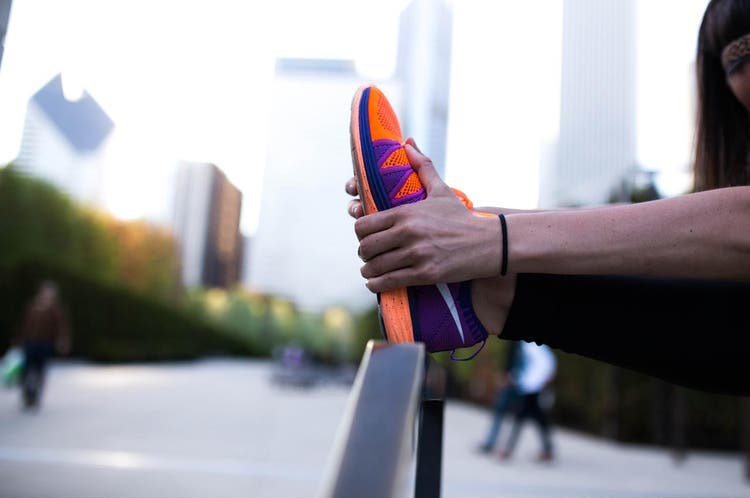4 Moves to Prevent Ankle Injury

Your ankles will thank you for better mobility.
Any runner knows a quick Google search will turn up effective training plans for marathons, 10k and 5k runs, and hundreds of tips for getting faster, improving endurance and even fighting boredom on long runs.
But when it comes to longevity—being healthy enough to run for as many years as we enjoy it— many of us are largely running on faith.
Trickle-down recovery
These days, every sport has top athletes reaching new, amazing achievements at older ages than we used to think possible. (Just Google “Oldest Olympian 2016” to see what we mean.)
And it’s no accident. One of the biggest open secrets the elite athletes have is planned recovery. This includes rest and sleep but also methods like mobility training to reduce wear and tear on the body.
Mobility training
In a healthy human body, bones don’t touch, they float within a structure of connective tissue, skin and muscles. Mobility is our ability to maintain this float. Repetitive movements, injuries, inflammation and inactivity can decrease our mobility.
But we don’t need to just hope we don’t lose mobility. We can train it. All we need is a plan.
A systematic approach to mobility can work for any area of the body. Here, we’ll focus on our ankles to reduce wear and tear not only on the joints of our feet but also on our knees and lower back.
1. Calm the system
First, we need to relax our nervous system. Guarding is a protective mechanism that kicks in as a response to an injury or near miss. It tightens up everything around a joint, preventing movement.
This is helpful while we are injured, but it causes problems when it stays on high alert after the injury has healed.
This Ankle Squash With Slow Breathing will reduce guarding and create more mobility through the front of the ankle.
https://www.youtube.com/watch?v=jQf-kX6HROM
- Sit on your heels, making sure the top of your feet contact the ground and your toes point out behind you.
- Sit tall and take four long, slow breaths (about 10 seconds each).
2. Circulate and hydrate
When the nervous system locks down a joint, it prevents movement. This blocks normal circulation, dehydrates the tissues in the area and shrinks the float in our joint. We can support normal function with techniques like this Ankle Rub Plus Scrub.
https://www.youtube.com/watch?v=j8N3TnySDqA
- Remove your socks and shoes.
- Sit on the floor in a comfortable position.
- Make a fist and gently use your knuckles to rub all around your left ankle. Front, sides, back—get it all.
- Then wrap your hands around your ankle and twist back and forth.
- Rub plus scrub for about 30 seconds until your skin feels warmed—don’t rub your skin raw!
- Repeat on your other ankle.
3. Re-educate the muscles
Have you ever stepped wrong while walking and then felt like your stride was “off” afterward? That stumble disrupted the rhythm and timing of your muscles, which is also a symptom of limited mobility.
In this Multidirectional Foot Flex, we turn the various stabilizer muscles that surround the foot, ankle and hips on and off to restore normal rhythm and timing to the muscles.
https://www.youtube.com/watch?v=lGdU7f1KDGg
NOTE: Only reach with your foot as far as you can while staying in control.
NOTE: Only reach the weight out as far as you can with good control.
- Stand tall with a light weight held at chest height.
- Reach your left foot out in front of you.
- At the same time, bend your right knee and reach the weight out to the right at chest height.
- Return to the start position, and repeat twice more, first reaching your left foot out to the left side, then out to a 4 o’clock position behind you. All three foot reaches together make one rep.
- Continue for five reps on each side.
4. Put it all together
To maintain the mobility we just created, we need to practice using it. In this Ankle Mobility Circuit, we create and maintain space as we move in multiple directions, with various levels of resistance. A mobility circuit like this can serve as a prep before a run or workout (one to two circuits) or as a stand-alone workout on recovery days (four circuits).
https://www.youtube.com/watch?v=vllmpMIcCiw
- Move at a fairly slow pace for five to 10 reps per side, using a light weight on the loaded drills.
- Move directly into the next exercise.
- Complete the circuit one to two times.
Photo credit: Death to the Stock Photo